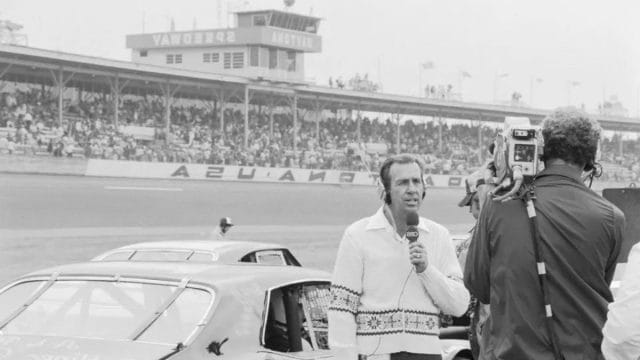Redefining NASCAR Traditions: NASCAR is steeped in traditions, a blend of enduring customs like the “Super Bowl” season opener, victory laps, iconic trophies, and pre-race rituals alongside discontinued practices such as the display of Confederate flags and Sunday race starts post-church gatherings. Some traditions have evolved, others faded into history, as NASCAR endeavors to adapt to contemporary times, aiming to resonate with new demographics and foster fresh fan engagement.
Throughout NASCAR’s modern era, commencing around 1972, television ratings stood as a yardstick for the sport’s overall vitality. The watershed moment arrived in 1979, when CBS broadcasted the Daytona 500, sparking a surge in NASCAR’s popularity, attributed partly to a snowstorm that kept viewers glued to their screens for the entirety of the live broadcast, netting a record 10.5 Nielsen rating and captivating 16 million viewers. Over the years, these ratings ebbed and peaked, with the pinnacle registered in 2006 during Jimmie Johnson’s first Daytona 500 win, garnering an 11.3 rating.
However, the landscape has shifted. NASCAR, like other professional sports and the entertainment industry, has witnessed a decline in traditional TV viewership. The shift is reflective of changing viewer preferences, gravitating towards streaming and online platforms. Consequently, the significance of TV ratings as the solitary measure of success has diminished, giving way to diverse revenue models revolving around streaming platforms reliant on subscriptions rather than traditional advertisements.
Network television has adapted to these changing tides. The revenue streams of networks like CBS and NBC increasingly derive from sources beyond traditional advertising. Moreover, the recent prominence of streaming platforms has revolutionized TV viewership, with Nielsen reporting streaming accounting for a significant chunk of total TV usage, surpassing linear TV viewership for the first time.
Amidst these changes, NASCAR, akin to other sports, has actively pursued strategies to engage fans through multiple channels, embracing social media, streaming services, and digital platforms. Initiatives like free livestreams through NASCAR Drive during races epitomize this shift towards diversification.
While NASCAR’s TV viewership may have experienced a decline, contextualizing these figures is crucial. Despite the dip, NASCAR’s viewership still surpasses that of other racing series in the U.S., including Formula One and IndyCar. Furthermore, NASCAR continues to strategize for the future, with its upcoming media rights deal anticipated to integrate traditional TV broadcasts with non-linear platforms, aligning with evolving viewer preferences.
Critics often rely on TV ratings to forecast NASCAR’s demise. However, such a reliance fails to encapsulate the sport’s overall vitality. NASCAR’s 2023 season, while not a standout year, boasted several highlights, including inaugural street races, first-time winners, and the crowning of popular champions across series. The season wasn’t devoid of challenges but was far from the worst, underlining the inadequacy of using low TV ratings as the sole measure of success.

In essence, the reliance on TV ratings as a singular metric to gauge NASCAR’s success, coupled with its portrayal by critics as a sport in decline, needs reconsideration. Just as outdated traditions have been discarded, the fixation on TV ratings warrants retirement, making space for a more comprehensive evaluation of the sport’s vitality beyond a single measurement.
ALSO READ: NASCAR TV Ratings: Neon Nights, Roaring Engines, and the Pulse of Racing Fans

